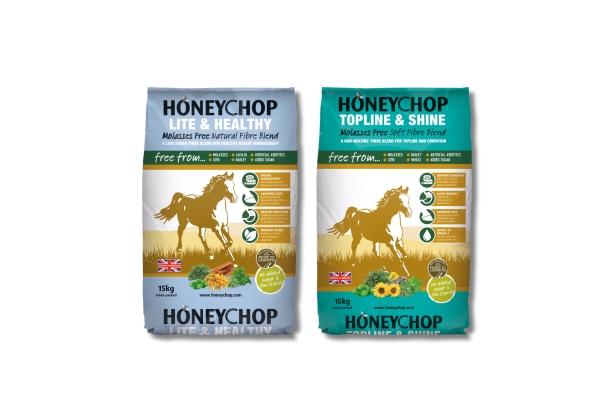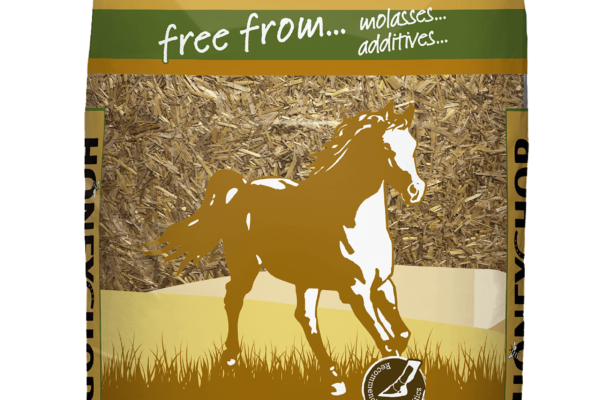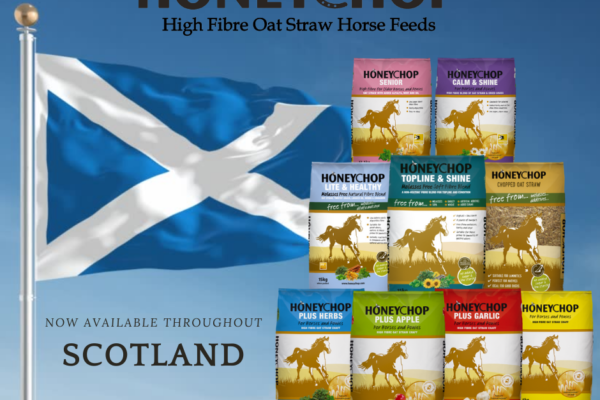Weight Management and Laminitis: Your Questions Answered
Laminitis is a serious and painful condition that affects many horses and ponies in the UK. There is a clear link between excess weight, insulin issues, and the risk of laminitis, which means diet plays a key role in both prevention and management.
Here we answer some common questions from horse owners about managing weight and reducing the risk of laminitis. From choosing the right forage to using balancers, soaking hay and monitoring condition, this guide offers straightforward advice to support long-term horse health.
What are the key dietary triggers that can lead to laminitis, and how can owners reduce the risk through feed management?
Laminitis is often triggered by dietary imbalances, particularly excessive intake of non-structural carbohydrates (NSCs) like sugars and starches found in lush spring grass and cereal-based feeds. These can disrupt gut function and trigger systemic inflammation, especially in horses with insulin dysregulation or Equine Metabolic Syndrome (EMS). To reduce risk, owners should prioritize low-NSC forage, soak hay when needed, avoid high starch feeds and restrict grazing.
Is it ever safe to feed cereals to a horse prone to laminitis — even in small amounts?
For laminitis-prone horses, it’s best to avoid cereals entirely and opt for an unmolassed fibre, such as Honeychop Lite & Healthy or Topline & Shine, with a specially formulated balancer or vitamin & mineral supplement, to meet nutritional needs without increasing risk.
How important is forage type and quality when managing or preventing laminitis?
Forage type and quality are critical in managing or reducing the risk of laminitis. Since forage makes up the majority of a horse’s diet, its nutritional profile—especially its non-structural carbohydrate (NSC) content—can make the difference between stability and a laminitic flare-up. Horses prone to laminitis should be fed low-NSC forages (ideally under 10–12%), as excess sugars and starches in hay or pasture can trigger insulin spikes and gut disturbances. Mature grass hay, tested and possibly soaked to reduce sugar content, is often the safest option. High-quality doesn’t mean lush or nutrient-dense—it means clean, mould-free and appropriate for the horse’s metabolic needs.
Are there certain grasses or hay types that are best avoided for laminitic or high-risk horses?
Early cut grasses are typically high in sugar. Choose mature, late-cut meadow hay, test it when possible and soak for a minimum of 30-60 minutes to reduce sugars by 30-50%.
How do balancers fit into the diet of a laminitis-prone horse, and what should owners look for in one?
For laminitis-prone horses, where a restricted diet is essential, a balancer plays a vital role in ensuring the horse still receives all the necessary vitamins, minerals and amino acids for healthy body function. These horses often can’t have traditional cereal-based feeds and so balancers offer concentrated nutrition in a small, low-calorie serving—helping support hoof health, immune function, and overall metabolic balance without increasing laminitis risk. When choosing a balancer, look for one labelled low in non-structural carbohydrates (NSC)—ideally under 10%—and free from added cereals or molasses.
What are your thoughts on soaked hay — is it always necessary, and does it remove essential nutrients?
Soaked hay can be a valuable tool for managing laminitis-prone horses, particularly when the hay’s NSC content is unknown. How long you should soak hay for is debateable. There are several variables that affect losses in soaked hay, such as the nutrients and energy it starts with, its structure, to the amount and temperature of water. Studies have shown that soaking hay—typically for 30 to 60 minutes in cold water—can reduce water-soluble carbohydrates by 30–50%, however it is best to monitor your own horse’s response. If you are soaking for 30 minutes and your good doer is not losing weight, then soak for longer (up to a maximum of 12 hours).
Soaking hay does leach out some nutrients, including water-soluble vitamins (like B vitamins) and minerals (such as sodium and potassium). These losses can be balanced with a good-quality vitamin-mineral supplement.
How can owners maintain condition in a horse at rest without increasing laminitis risk?
This can often feel like a challenge! The key is to provide a balanced, low-sugar and low-starch diet that meets nutritional needs without promoting weight gain or insulin spikes. Feed-wise, an unmolassed chaff (such as any from the Honeychop Free From range) plus a low-calorie balancer or vitamin and supplement provides a great bucket feed option.
Forage should be the foundation of the diet, preferably hay that is low in non-structural carbohydrates, which may mean soaking if the hay hasn’t been tested. Access to lush grass should be restricted – strip grazing or using a grazing muzzle can help control intake and prolong feeding time, which supports digestive health and reduces the risk of overconsumption. Regular monitoring of the horse’s body condition score ensures that weight is maintained appropriately and any necessary adjustments to feeding can be made promptly. Even while resting, light movement such as daily turnout or hand-walking can support circulation and metabolic function. Finally, consistent veterinary and farrier care is essential to detect any early signs of laminitis or related conditions, allowing for proactive management.
For leisure horses in light work, what does a ‘laminitis-safe’ diet look like in practice?
A laminitis-safe diet for leisure horses in light work should prioritize low-NSC forage and carefully controlled feed to manage weight and prevent metabolic spikes. The foundation of the diet should be high-quality, low-sugar hay (preferably tested for NSC content) and, if needed, soaked hay to further reduce sugars. For additional nutrition, a low-calorie, low-starch balancer can provide essential vitamins and minerals without adding excess sugars or calories. If extra calories are necessary, consider adding oil, as this is a safe source of slow-release energy.
How can feeding routines and turnout times support laminitis management?
Feeding routines and turnout times are crucial elements in managing laminitis. Establishing a consistent feeding schedule with small, frequent meals helps maintain steady blood sugar and insulin levels, reducing the risk of metabolic spikes that can trigger laminitic episodes. Trickle feeding forage throughout the day is ideal, as it mimics the horse’s natural grazing behaviour and avoids large starch intake that can overwhelm the digestive system. When it comes to turnout, restricting access to lush grass is key. A track system, strip grazing or use of a grazing muzzle are all beneficial methods to reduce grass intake. Turnout should ideally be during cooler parts of the day, such as early morning or late evening, when sugar levels in grass are lower.
What role does body condition scoring play in preventing laminitis, and how often should owners assess it?
Horses that are overweight or obese are at higher risk of laminitis, particularly if they develop insulin dysregulation or other metabolic issues. By using body condition scoring, owners can track subtle changes in a horse’s weight and fat stores over time. This helps catch problems early—before they lead to laminitis. It’s recommended that owners assess their horse’s body condition at least once a month, or more often if the horse is prone to weight fluctuations or has a history of laminitis. Regular scoring supports informed decisions about diet, exercise, and overall management.
What are the key signs that a current feeding plan might be putting a horse at risk — even if they appear healthy?
Even if a horse appears healthy, there are subtle signs that a feeding plan may be putting them at risk for laminitis. Key indicators include weight gain or an increase in body condition score beyond the ideal range (typically 4-6 on the 9-point scale). Horses with metabolic issues may show fat deposits around the neck, shoulders, or behind the eyes, which can signal insulin resistance. Other red flags include changes in hoof condition, such as increased sensitivity, heat in the hooves, or a subtle lameness, which might indicate early laminitic changes.





